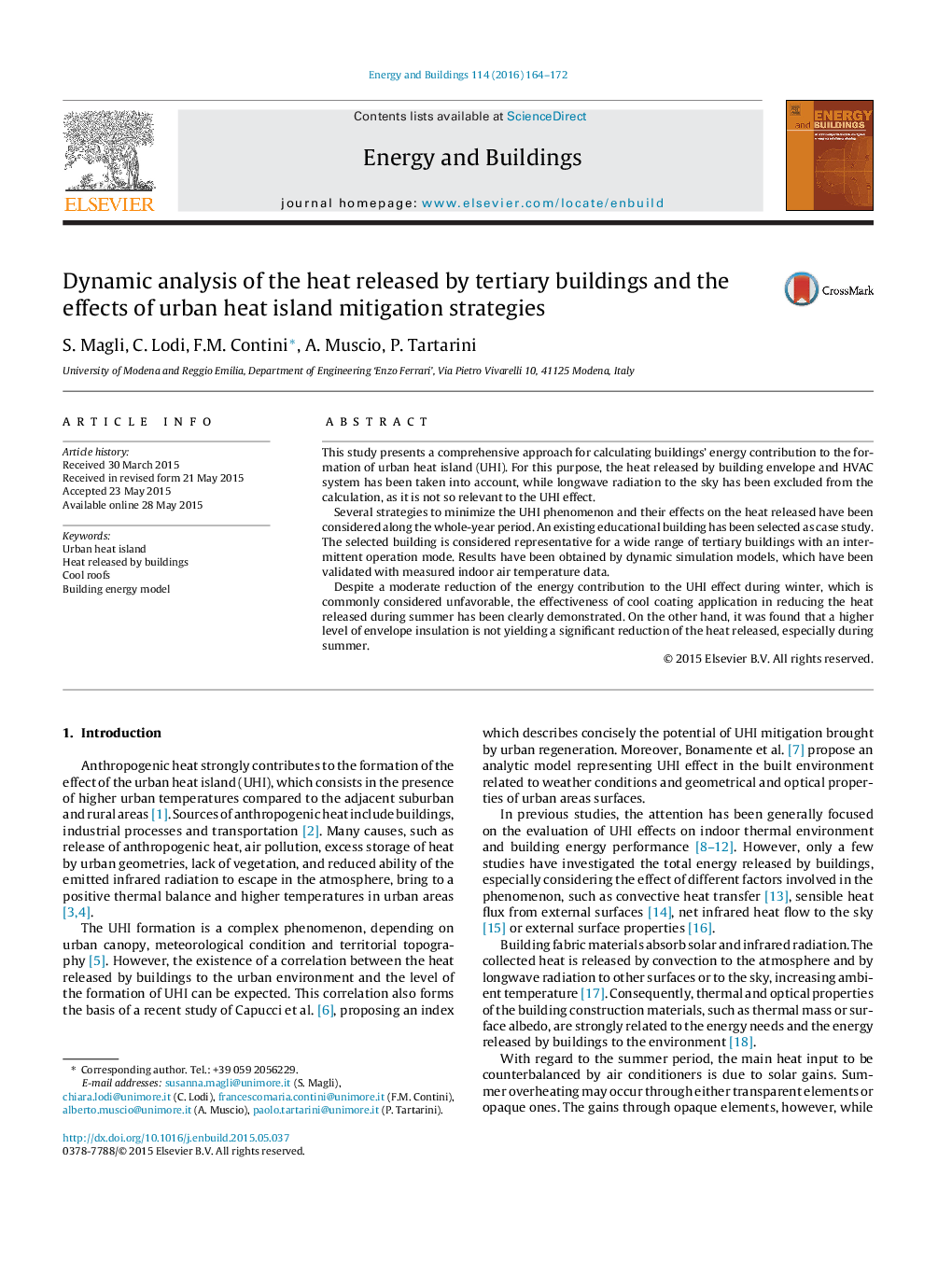| کد مقاله | کد نشریه | سال انتشار | مقاله انگلیسی | نسخه تمام متن |
|---|---|---|---|---|
| 262129 | 504012 | 2016 | 9 صفحه PDF | دانلود رایگان |
• The analysis of the buildings’ contribution to UHI is investigated.
• The heat released by outer surfaces and HVAC system is analyzed.
• A comparison of the effects of UHI mitigation strategies is carried out.
• Highly insulated envelopes do not reduce the heat released during summer.
• Outer surfaces contribute much more than the AC system to the UHI.
This study presents a comprehensive approach for calculating buildings’ energy contribution to the formation of urban heat island (UHI). For this purpose, the heat released by building envelope and HVAC system has been taken into account, while longwave radiation to the sky has been excluded from the calculation, as it is not so relevant to the UHI effect.Several strategies to minimize the UHI phenomenon and their effects on the heat released have been considered along the whole-year period. An existing educational building has been selected as case study. The selected building is considered representative for a wide range of tertiary buildings with an intermittent operation mode. Results have been obtained by dynamic simulation models, which have been validated with measured indoor air temperature data.Despite a moderate reduction of the energy contribution to the UHI effect during winter, which is commonly considered unfavorable, the effectiveness of cool coating application in reducing the heat released during summer has been clearly demonstrated. On the other hand, it was found that a higher level of envelope insulation is not yielding a significant reduction of the heat released, especially during summer.
Journal: Energy and Buildings - Volume 114, 15 February 2016, Pages 164–172
